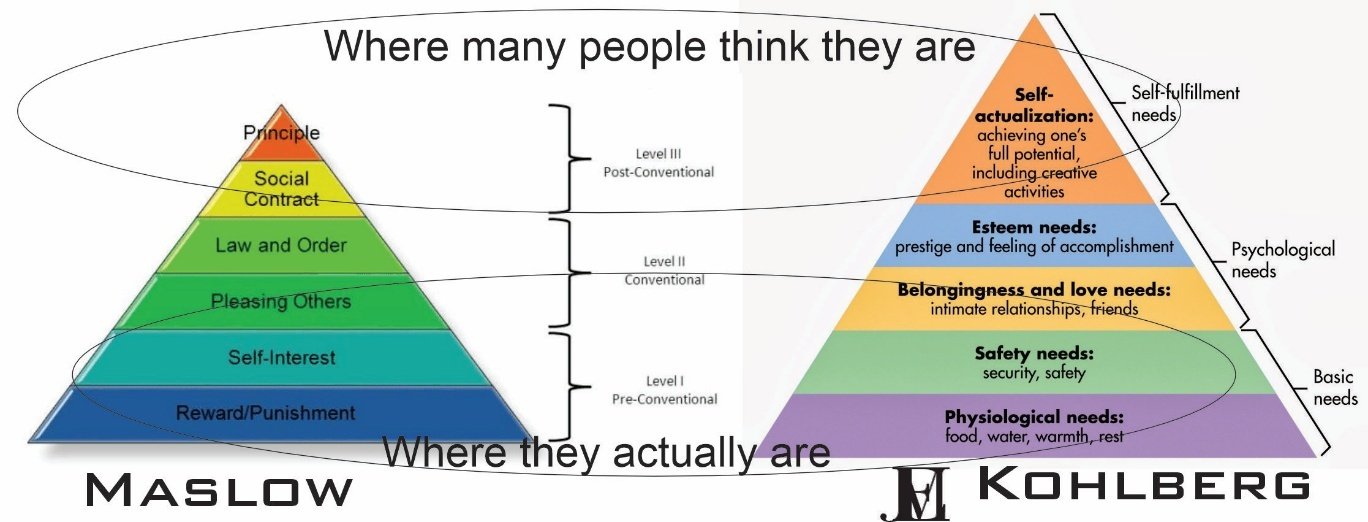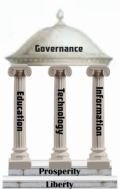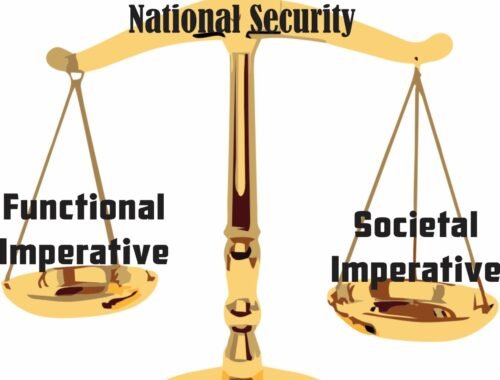
Virtue-Based Leadership: Part 3 Moral Development and Education
Abstract: We live in a society and time that seems very fluid regarding moral and ethical standards and conduct. This is especially true for people on the polar extremes of the left/right divide, but affects all of us. To make the situation even more complex, most of us think we highly morally evolved. Those on the right think we had the ethical/moral standards right when we had a strong Judeo-Christian framework. Those on the left think we’ve grown beyond that to a new humanistic basis that has a far more relativistic view of ethics and seeks to embrace virtually all cultures and outlooks. Leaders need to understand these dynamics—and they may be subject to them as well—and assess the organization’s moral and ethical climate and use the tenets of moral development and adult education and leading by example to develop moral and ethical organizations.
This blog focuses on adult education, especially for leaders, which should build that foundation. It expands on the lower part of the framework discussed in Virtue-Based Leadership, Part 1. The framework is geared to leaders, therefore; it is designed to enable adult education rather than K-12 and college education. Adult education is kinetic—hands on and action-oriented vice a lecture setting. Case studies and other thought-provoking activities are often used as well.
Unfortunately, most “adult education” that I’ve seen is thinly disguised training, often to meet legal and governance requirements. Training teaches specific skills and is limited to specific scopes. Education should produce or transmit knowledge and understanding and is broader in nature. See Key Differences for a good chart that shows the differences between training and education.
But successful adult education needs to be built on a solid educational foundation. This is especially true for moral and ethical development and education.
verywellmind defines moral development as:
“Moral development is the process by which people develop the distinction between right and wrong (morality) and engage in reasoning between the two (moral reasoning).”
Moral development starts early in childhood. Perhaps almost as soon as the child is born. That is the basis for the three models of moral development from Piaget, Kohlberg, and Erickson shown above. I first came across them in my First Class Leadership (cadet nickname Leadersleep) course at West Point 40+ years ago. It was a bit of a cross between psychology and sociology. The only thing I remember about the course are these three models and a discussion about Erickson stating that if we do not continually practice moral behavior, we’ll lose it. While I understand that by their nature, all models are imperfect and wrong, they can provide some useful ways to look at situations.
When I was growing up, we were taught right from wrong early on. Our cartoons and TV shows showed it to us. Think of everything from Space Ghost to Andy Griffin to My Three Sons and Disney. My wife and I have watched many of these shows with the advent of online streaming. Now, look at Grand Theft Auto and all the first-person shooters and even the network TV. Very different.
So where do our children engage in moral development? Perhaps not at home with both parents working and the TV and smartphones/tablets babysitting. And I’m not sure they get it at schools either.
Well, they get something. Some version of morality and right and wrong. But it is today’s society with sliding standards and vague definitions of ethics. This creates an interesting situation for both society and leaders.
To illustrate it, let us look at Kohlberg and Maslow together. They seem to be related. Both look at a hierarchy of development/needs that build on lower orders. The models require meeting lower orders before higher orders can be addressed. Again, the models are not perfect and there is probably bleed over between levels, but they serve as a useful point of departure for discussion.
 As the figure below suggests, I suspect that many people, especially on the polar ends of the right/left spectrum, think they are higher up in the pyramid structure, but they are frozen closer to the bottom. Perhaps that is why we see so many people advocating the ends justify the means and extreme “solutions”.
As the figure below suggests, I suspect that many people, especially on the polar ends of the right/left spectrum, think they are higher up in the pyramid structure, but they are frozen closer to the bottom. Perhaps that is why we see so many people advocating the ends justify the means and extreme “solutions”.
So, what does this mean for leaders?
First, leaders must recognize they may fool themselves about where they are on the spectrum. To address this, leaders need to engage in self-reflection, analysis, and study. With adult learning, case studies that raise complex issues and require deep understanding, critical thinking, and wisdom may help.
Second, leaders must understand that the people in their organizations may well have the same issue. The most important thing a leader in this situation can do is to set a virtue-based culture and practice it. When there is a complex, multi-dynamic issue, an effective leader will work through the issue with the team, almost like a case study and look at it from different perspectives and get team members involved in the discussion. When the organization requires ethics training, it should be cases and discussions rather than the often canned and repetitive online training materials. The organization should approach crises and ethics training as education rather than things to be kept behind closed doors or check the box training.
In short, we need to engage in adult education, not training, to address the moral and ethical fluidity we see in society today and Piaget, Kohlberg, and Erickson’s models may help to create effective education.
Related Posts:
Education
Teachers’ Unions and Critical Theories
Using the Education Institution to Create History, Part 1: Introduction
Reconstructing History, Part 2: The Maskirovka of History
Reconstructing History, Part 3: Social Justice Movements
Reconstructing History, Part 4: Multiple Punctured Equilibriums
Reconstructing History, Part 5: The Education Institution and Creating History
Reconstructing History, Part 6: Culture, History, and the Future
Reconstructing History, Part 7: Conflict, History, and the Future
Re-constructing History, Part 8: First, Do no Harm
Re-constructing History, Part 9: Is the Education Institution a Cult?
Reconstructing History, Part 10: Means, Motive, and Opportunity
Educating Sheep Versus Citizens: Part 1
Educating Citizens versus Sheep, Part 2
Educating Citizens versus Sheep, Part 3
Educating Citizens versus Sheep, Part 4: Education Framework
Educating Citizens versus Sheep, Part 5: The Keystone and Serious Games
Educating Citizens versus Sheep, Part 6: Scenario-Based Learning
Educating Citizens versus Sheep, Part 7: Learning Objectives
Virtue
Virtue: The Missing Enabler of the Republic
Ethics, Morality, and Virtue: Relative vs. Absolute Meaning
Virtue and Operant Conditioning
Standards are the Raw Materials of Virtue: He Who Controls the Standards, Controls Behavior
Do Oaths Have any Meaning Anymore?
Politics, Politicians, and Demonic Possession
Virtue and Pandora’s Box: Effective Policy
Ethics, Morality, and Virtue: Relative vs. Absolute Meaning
Virtue: Religion and Philosophy, What does the Founders’ Vision Embrace?
Communism’s Dirty Secret (and Capitalism’s and Democracy’s as Well)
The Grand Inquisitor on the Nature of Man: Totalitarian vs. Liberty





